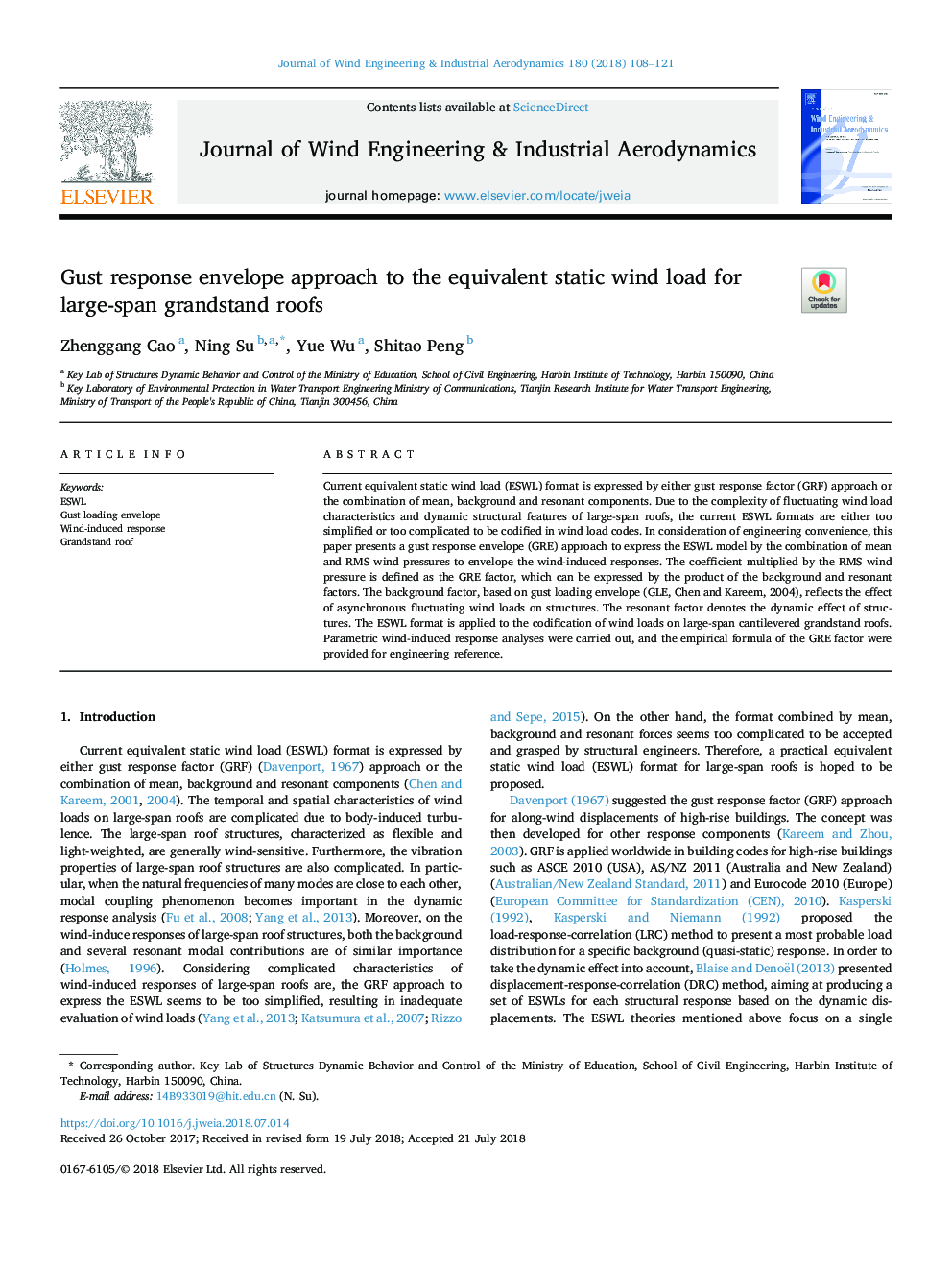| Article ID | Journal | Published Year | Pages | File Type |
|---|---|---|---|---|
| 6756790 | Journal of Wind Engineering and Industrial Aerodynamics | 2018 | 14 Pages |
Abstract
Current equivalent static wind load (ESWL) format is expressed by either gust response factor (GRF) approach or the combination of mean, background and resonant components. Due to the complexity of fluctuating wind load characteristics and dynamic structural features of large-span roofs, the current ESWL formats are either too simplified or too complicated to be codified in wind load codes. In consideration of engineering convenience, this paper presents a gust response envelope (GRE) approach to express the ESWL model by the combination of mean and RMS wind pressures to envelope the wind-induced responses. The coefficient multiplied by the RMS wind pressure is defined as the GRE factor, which can be expressed by the product of the background and resonant factors. The background factor, based on gust loading envelope (GLE, Chen and Kareem, 2004), reflects the effect of asynchronous fluctuating wind loads on structures. The resonant factor denotes the dynamic effect of structures. The ESWL format is applied to the codification of wind loads on large-span cantilevered grandstand roofs. Parametric wind-induced response analyses were carried out, and the empirical formula of the GRE factor were provided for engineering reference.
Keywords
Related Topics
Physical Sciences and Engineering
Energy
Renewable Energy, Sustainability and the Environment
Authors
Zhenggang Cao, Ning Su, Yue Wu, Shitao Peng,
